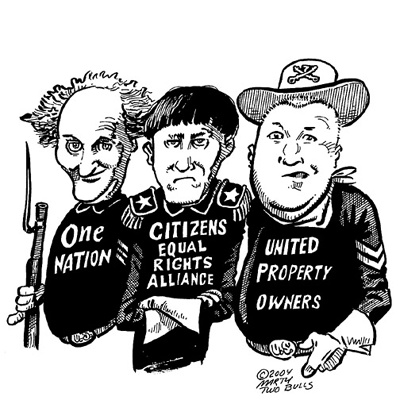Us vs. them Indians
Newcomb: Anti-Indian rhetoric in the 21st centuryEvery area of Indian country seems to have its own version of the anti-Indian movement. It is a movement that crafts messages by using some of the deepest political concepts and core values of the dominant American society. It is a movement that tries to appeal to an unconscious fear of the "disintegrating" influence of "the other." This approach may be particularly effective these days when an "us vs. them" mentality and the use of terms like "terror" and "national security" are so prevalent in public discourse.
The categories and metaphors used in anti-Indian rhetoric are wrapped in language that reflects a number of values shared by millions of Americans. Terms and phrases such as "One Nation," "equal rights," "liberty," "justice," "equal justice under law" and so forth seem quite normal to the average person in the United States.


1 comment:
It sounds like it was written by an academic, at least. Newcomb's columns are usually pithier than this one.
I'd say he was mostly pussyfooting in this article. I don't see much "stand up and shout" rhetoric.
I favor the approach I ascribed to Wade Wofford: "equal measures of facts and evidence, wit and sarcasm."
Post a Comment